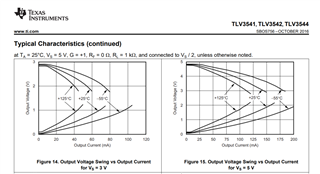The datasheet specifies a maximum output swing from rail of 0.3 V, as shown:

Is the maximum output swing from rail equal for both the positive rail and negative rail? Or is the specification a conservative value based on the greater of the maximum output swings to the positive and negative rails?


